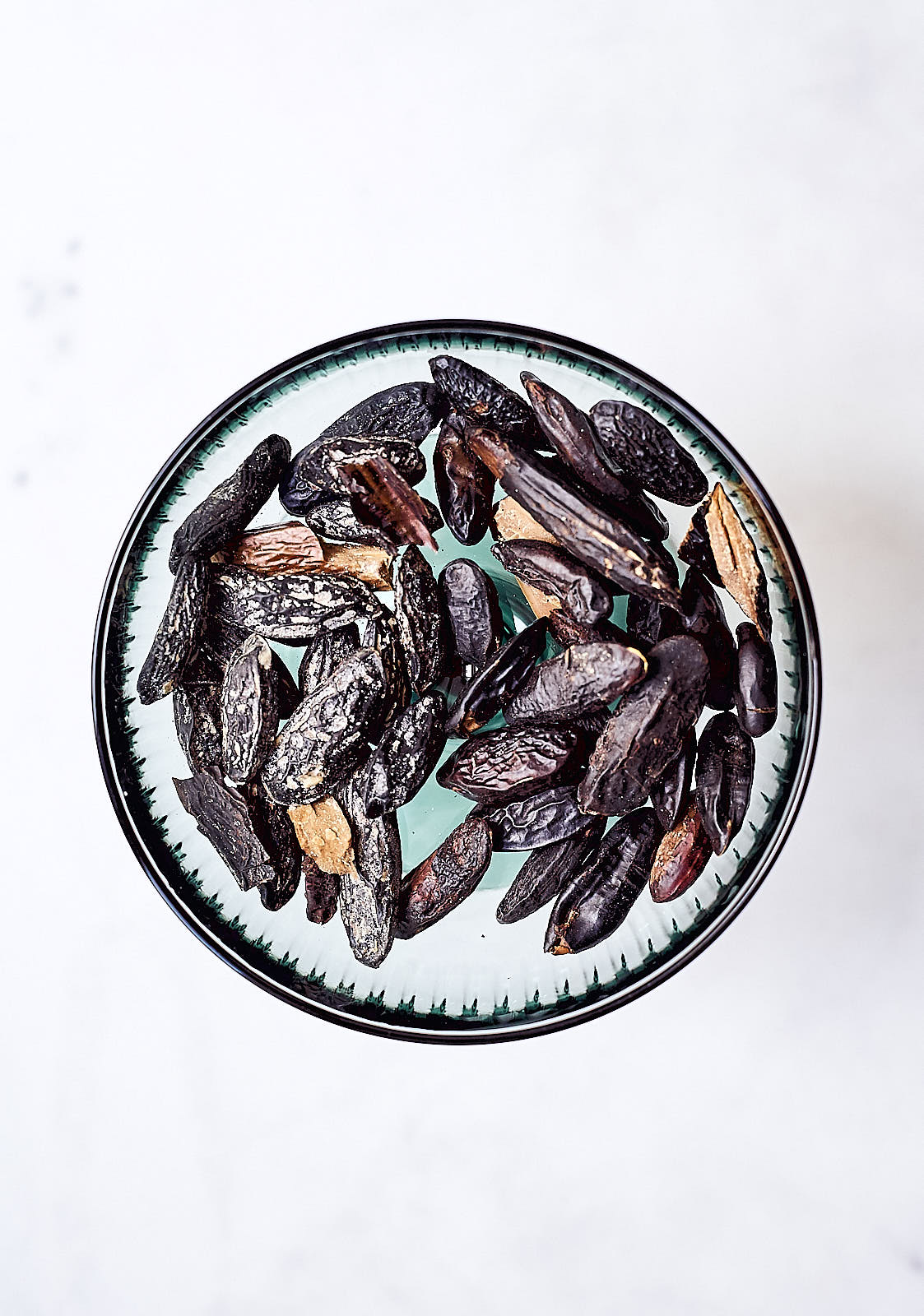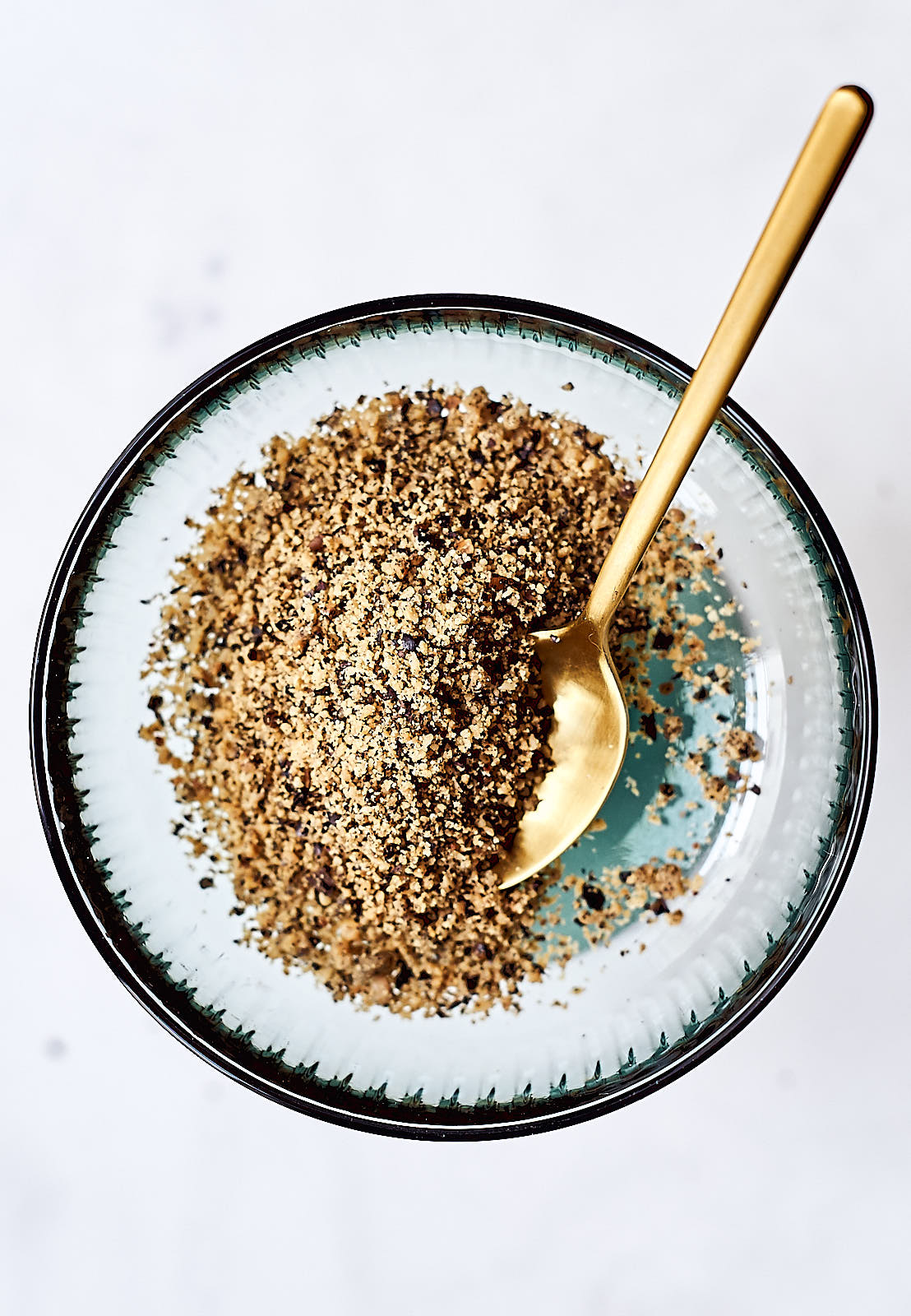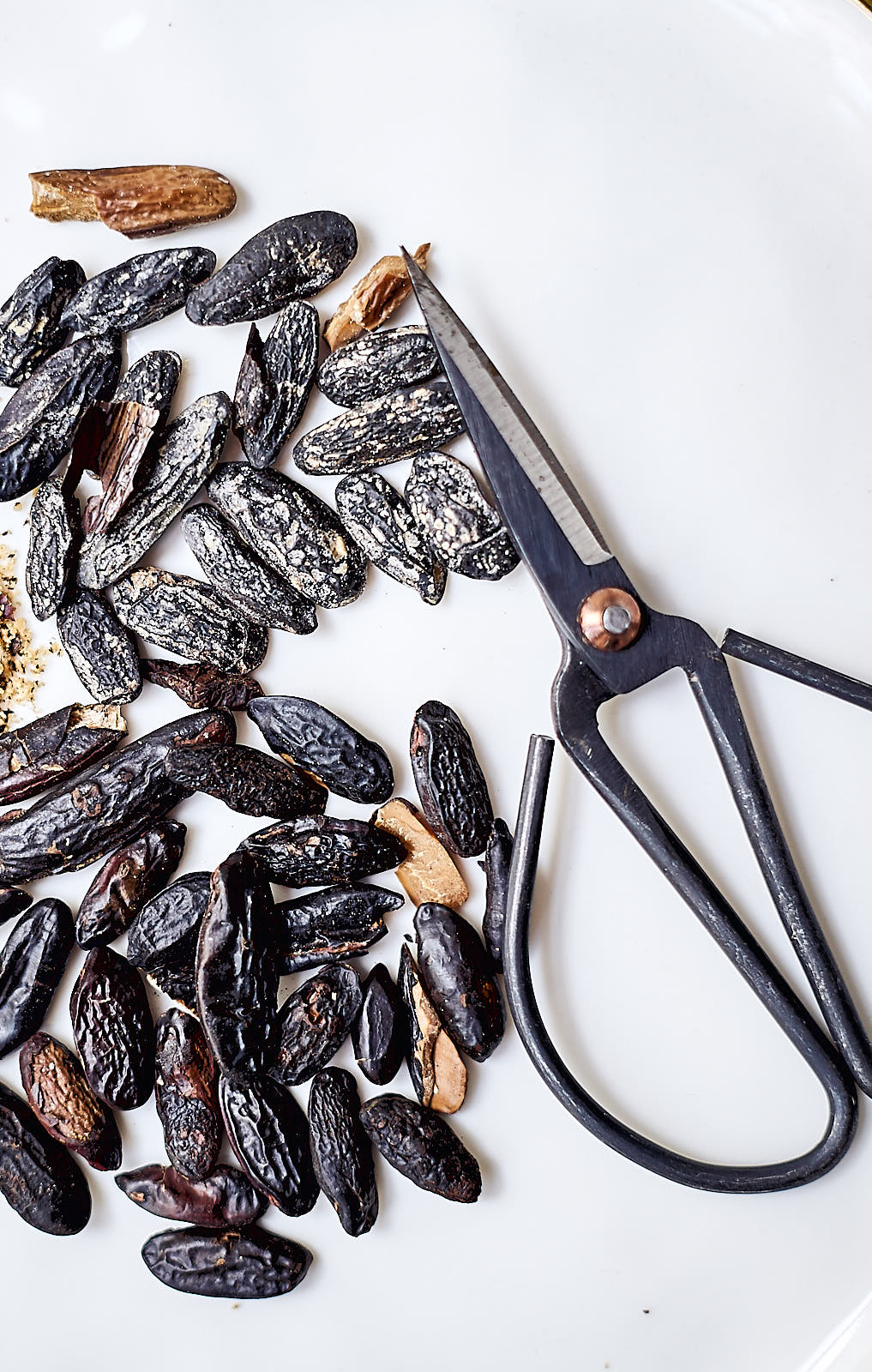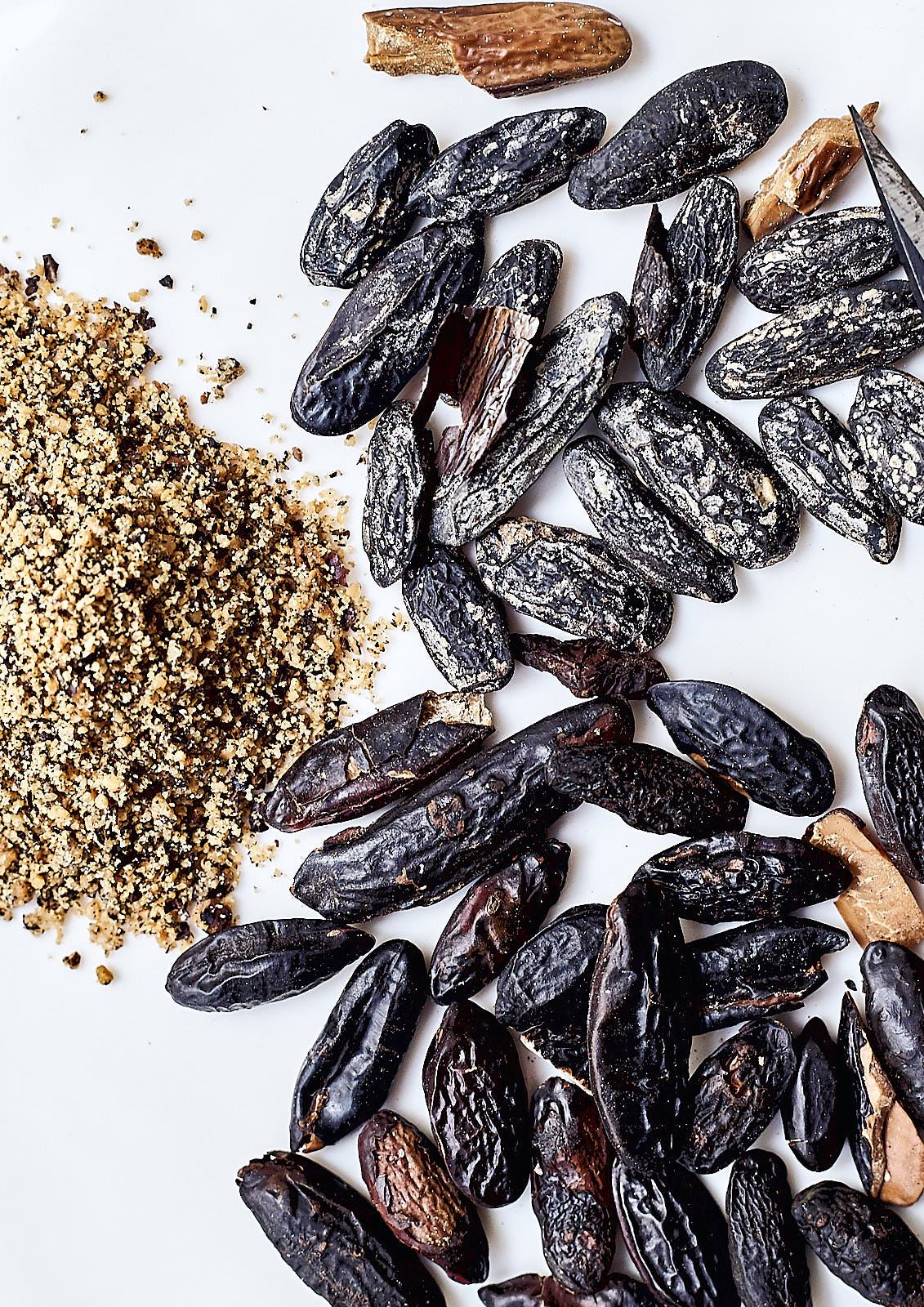Tonka beans
It was early morning in New York, and we had arranged to meet Micheal Laiskonis at Grand Central Terminal to spend the day eating and visiting his favourite places. We went from one boulangerie to the next pastry shop, from a bookstore to a Japanese grocer, and finally into a small, but famous spice shop (this seemed highly suspicious to me). The place had everything, even TONKA beans, which surprised Michael. He told us that they were illegal in the US, even though you can find the word tonka on the dessert menu of many of New York’s finest restaurants.
But what is a tonka?
Many, particularly if you don’t live in the Amazon, don’t know of the flowing tree cumaru, which grows in the jungles of the Amazon (Venezuela, Guyana, Brazil, and other places in northwest South America). It is huge and impressive – like a giant lung that works to help nature. Regardless, it has been known to the natives forever and only recently discovered by outsiders that the tree bears orange fruit resembling mango. When ripe, it has red seeds, similar to almonds, that are dried for a year, soaked in a rum bath for 24 hours, and then dried again. To us tonka bean lovers, they look like almonds that have past their best-by date 20 years ago, resembling shriveled raisins. But they have such a fantastic aroma from the crystals that form during drying, cumarin, which makes your head spin each time you take a whiff.
Although I’ve read many on-line articles that say that tonka beans are nothing special, a true lover knows how wonderful they smell and the heavenly flavour – something between vanilla, cherries, pears, almonds, cacao, chocolate, and even a whiff of magnolia. It’s a bean so full of flavour and aroma that it’s difficult to pinpoint, but one thing is clear – it’s fantastic. By the way, it you have a wish that really needs to be fulfilled, you must go to Guyana where you hold the bean in your left hand and a dead snake in your right. You make a wish and throw the bean into the river and tie the dead snake to the highest branch in the tonka tree. But I’ll just stick to putting tonka beans into my cheesecake.
They learned to separate cumarin from the tonka way back in 1820, and thanks to its low price, it was used as a vanilla substitute in food and even perfumes and tobaccos until 1920. However, it was discovered to be harmful to your liver and banned in the US in 1954.
The thing that makes tonka beans banned in many countries is the high concentration of cumarin, but what many don’t understand is that lavender and cinnamon are also high in cumarin. Even though the FDA likes to conduct raids in restaurants, the US is the largest importer of tonka beans in the world, but it’s still not clear why lavender and cinnamon aren’t banned. In 2013, it was discovered that over half the cinnamon Danish production had too much cumarin and was almost banned, but now the crisis has been averted and all is well.
In 2006, one the world’s most famous restaurants, Alinea, was inspected by the FDA after it was made known that the chef, Grant Achatz, used tonka beans. It’s not clear if they found any, but one thing is certain: it didn’t stop the chef from publishing his cookbook a few years later that included a tonka bean biscuit recipe, and those who have tasted them know how good they are.
While legal institutions fight over regulations, the world’s pastry chefs (and those who are interested in this topic) know that sensible use of the tonka bean won’t harm anyone. For a standard 12-cookie recipe, you only need1/4 tonka bean; for cheesecake – the same or even just 1/3. You would need to eat about 30 beans for any adverse effects on your system. But the prudent know that one bean is enough to produce 20 to 50 dishes.
Although tonka beans can be used many different ways, there are combinations that are just heavenly:
Tonka + chocolate
Perfect with sweet fruits and berries, such as apricots and strawberries
Complex taste nuances suit cocktails, especially those made with cognac or whiskey because they have similar taste profiles
The most chic Parisian pastry shops use tonka in their desserts – from cookies to crèmes.
Beans are added to warm milk that is used to make ice cream, custard, panna cotta, and other desserts
Mascarpone loves tonka and tonka loves mascarpone
Italy has fantastic truffles with tonka
In South America, tonka is rubbed into a paste that is added to milk for a sweet drink
Just like vanilla, tonka is also used in savoury dishes where the best is mayonnaise, tart sorbet, pumpkin soup, and mashed potatoes
One dish you must try is Réunion Island’s poulet à la vanille, where the vanilla can be replaced by tonka.
Here are a few of my recipe ideas, inspired by my spice guru friend Stan Dimpers:
Prepare tonka custard, ice cream, or panna cotta, served with fruit or berries. If you wish the tonka to be noticeable, grate it into the dish. But if you only want the nuance, add the bean whole. Just don’t boil the milk too long as that reduces the nuances of the tonka flavour. Just heat a bit and let sit for the flavour to soak in.
Add grated tonka to mascarpone that you plan to add to tiramisu or any other dessert, or mix it into your breakfast yogurt
Add it to a crumb topping, especially for a strudel or any dessert made with plums, rhubarb, or gooseberries
Add tonka to the pot in which you are poaching plums or pears for dessert
Add a tonka bean to a bottle of sherry, cognac, whiskey, Grand Marnier, or vodka and let it sit for a few weeks
Grate it in dough – bread, pastry or croissant. Just a bit and the flavour will bloom again
Add to mayo you plan to serve with white fish (he suggests to add the zest of an organic lemon
Grate on scallops
Add a tonka bean to any meat or bean dish
Grate into carrot, Jerusalem artichoke, parsnip, or potato mash, and always add lots of butter
Place a bean into a sugar dish for tonka sugar (just like vanilla sugar)
Important!
Grate or finely slice the amount you will use just before cooking. Otherwise, the tonka bean will lose its flavour, just like any other spice
Around the world you can buy fresh and roasted whole tonka beans, grated tonka, and tonka sugar
Roasted beans are prepared just like coffee beans and become milder, losing a bit of the distinct almond aroma, but gaining a sense of condensed milk and white chocolate making it better for mild dishes
Grated beans are a great base for mixing with other spices or adding to sugar for cookies and desserts, as well as adding to cinnamon or cardamom pastries
It’s not suggested to eat more than 30 tonka beans because the cumarin could cause unpleasant side effects, or even death. The same goes for nutmeg, lavender, and cinnamon
Story and pictures: Signe Meirane
Camera: Sony Alpha 7s







